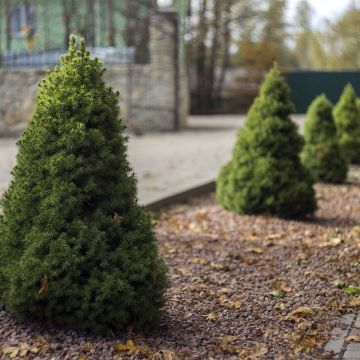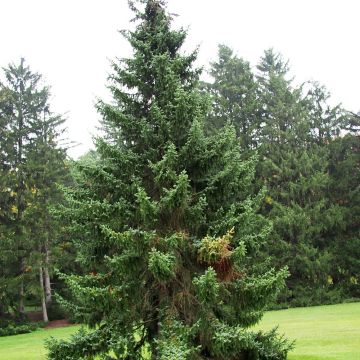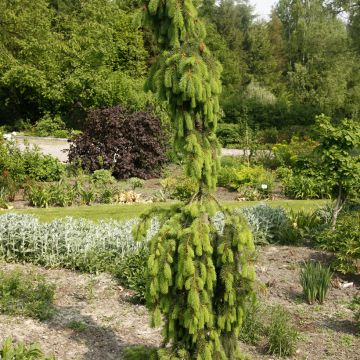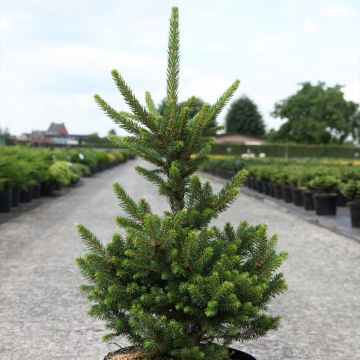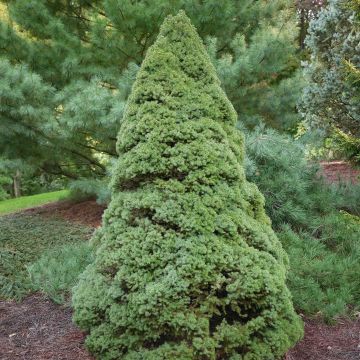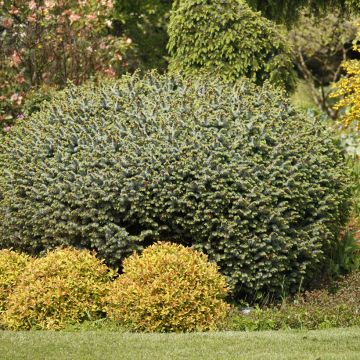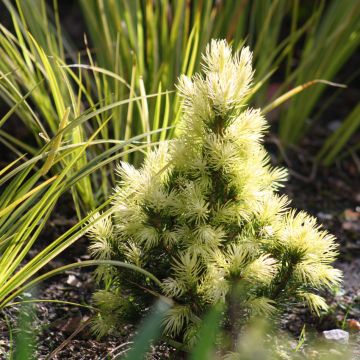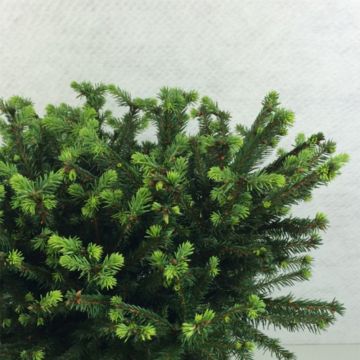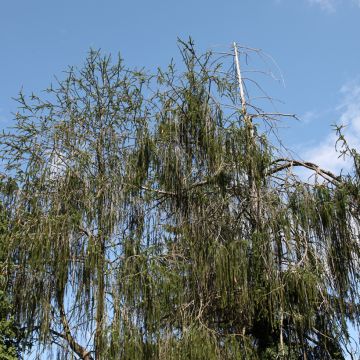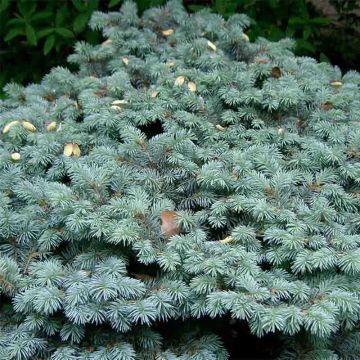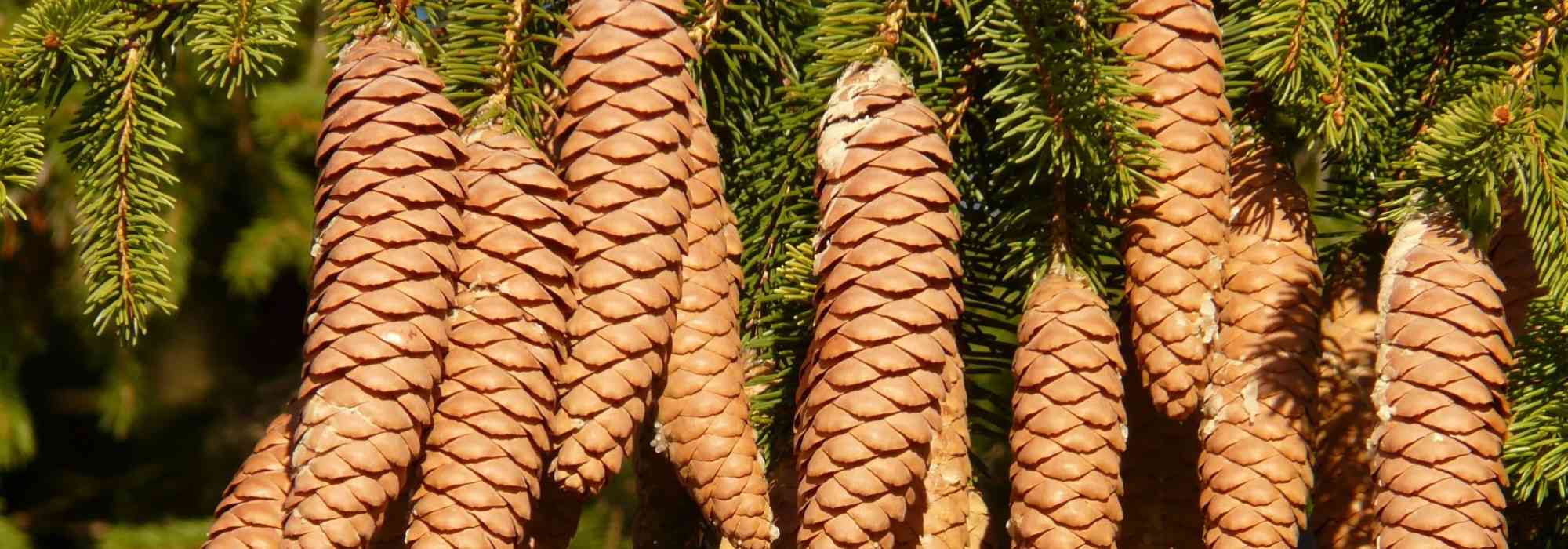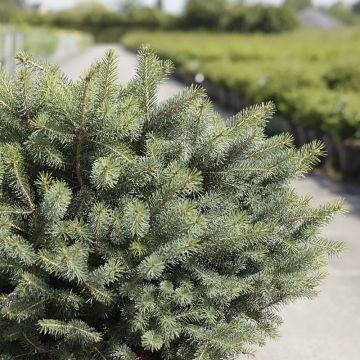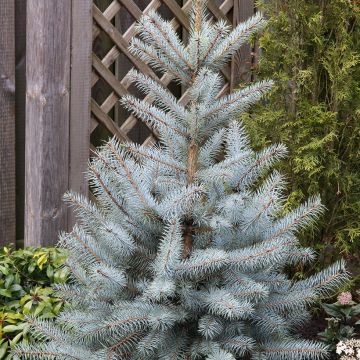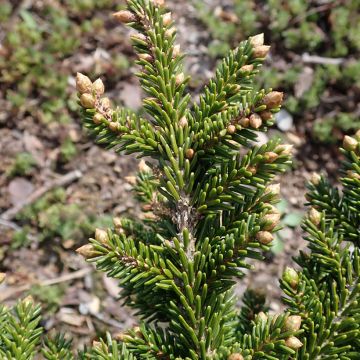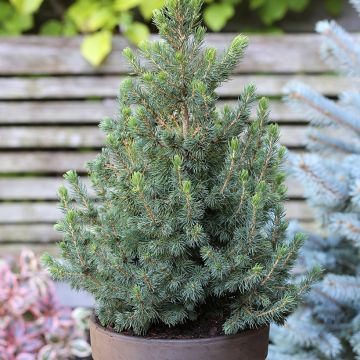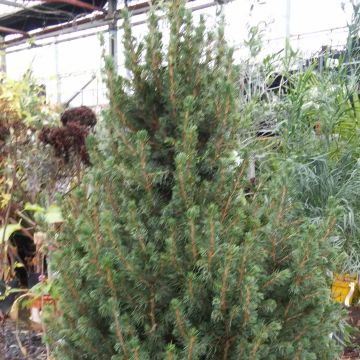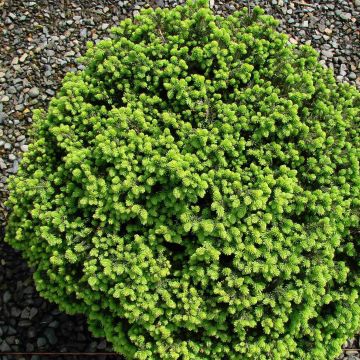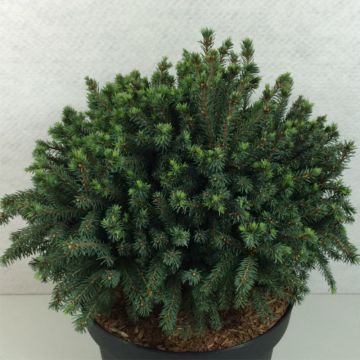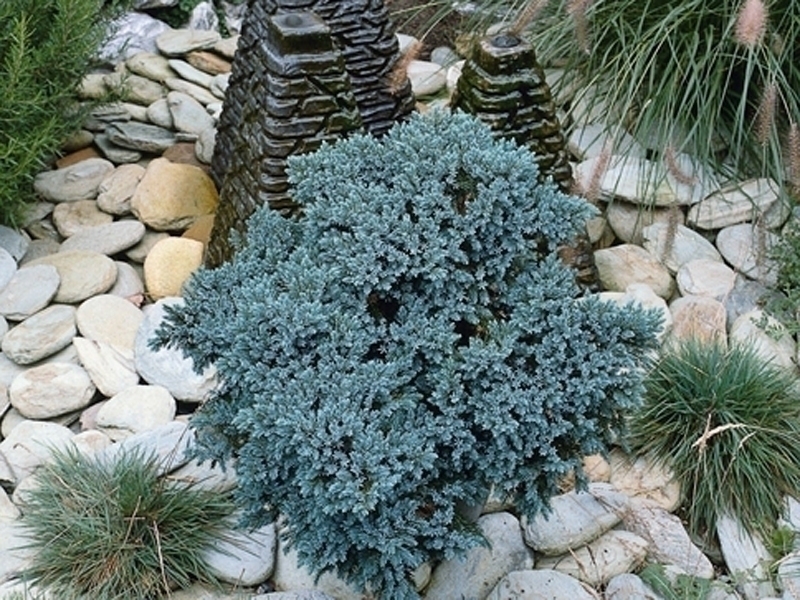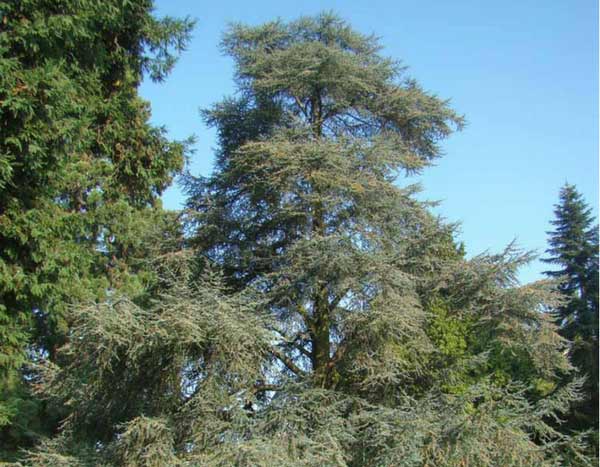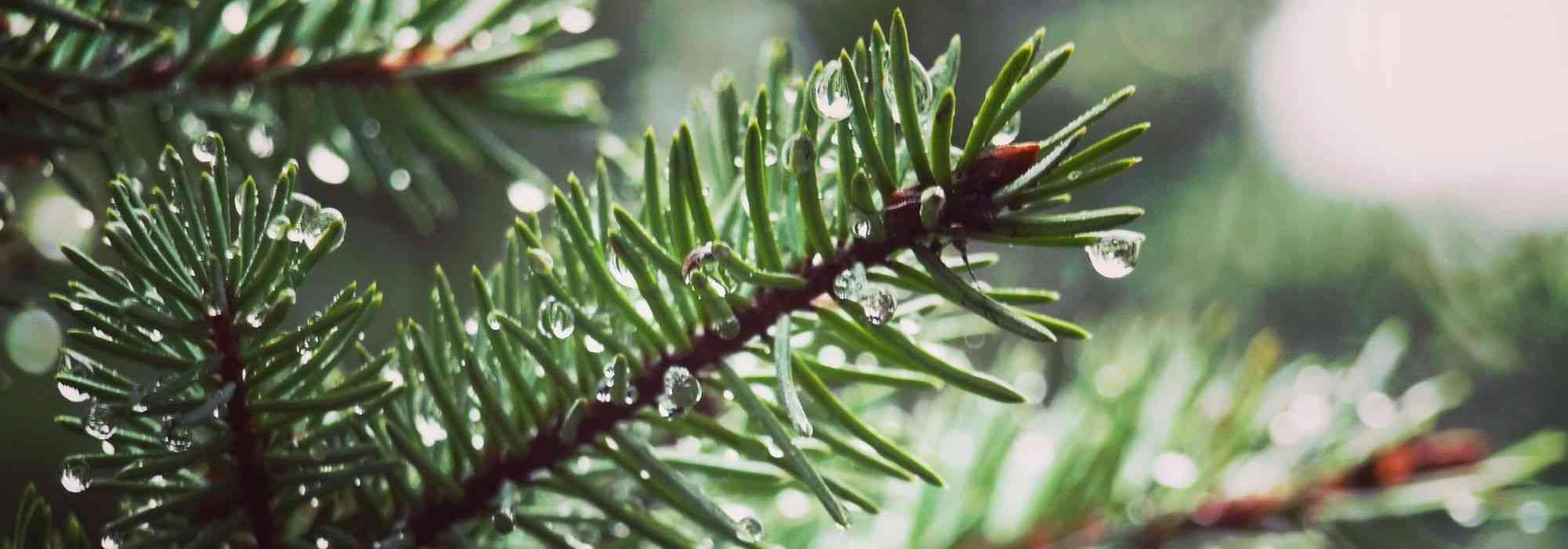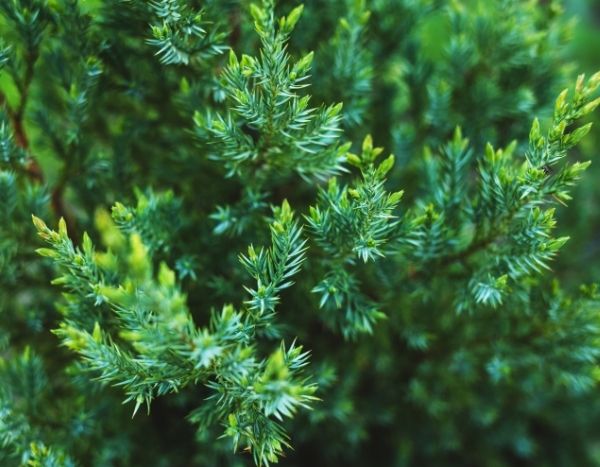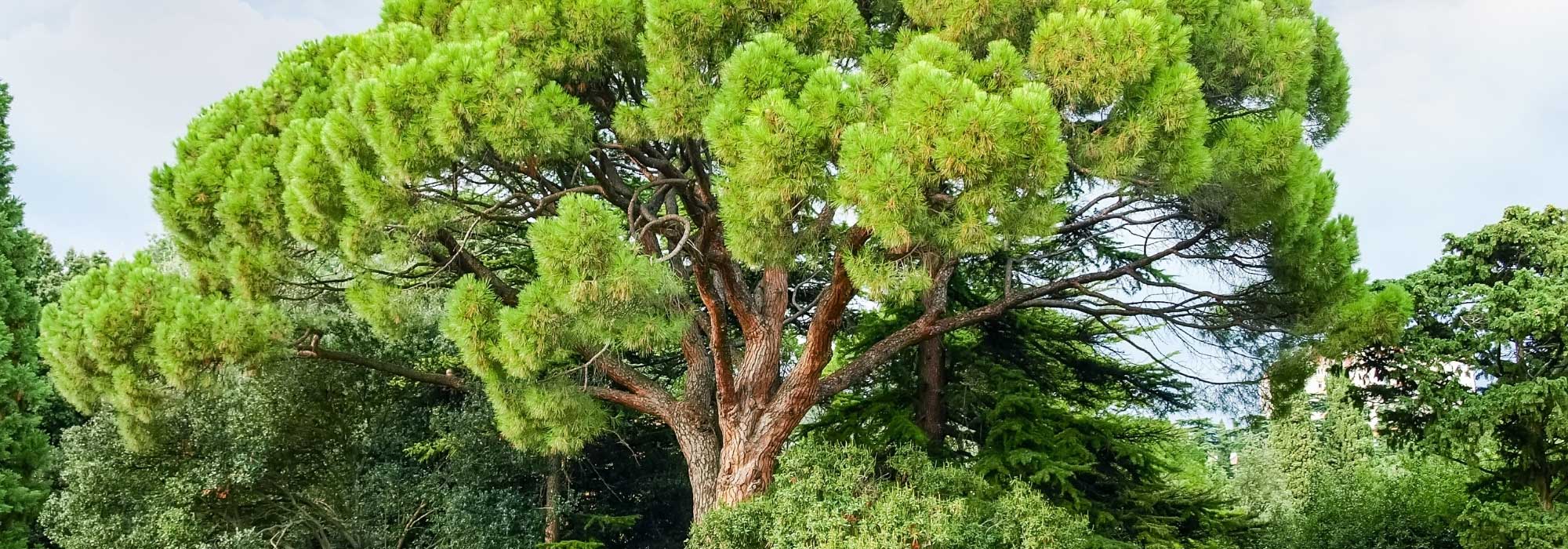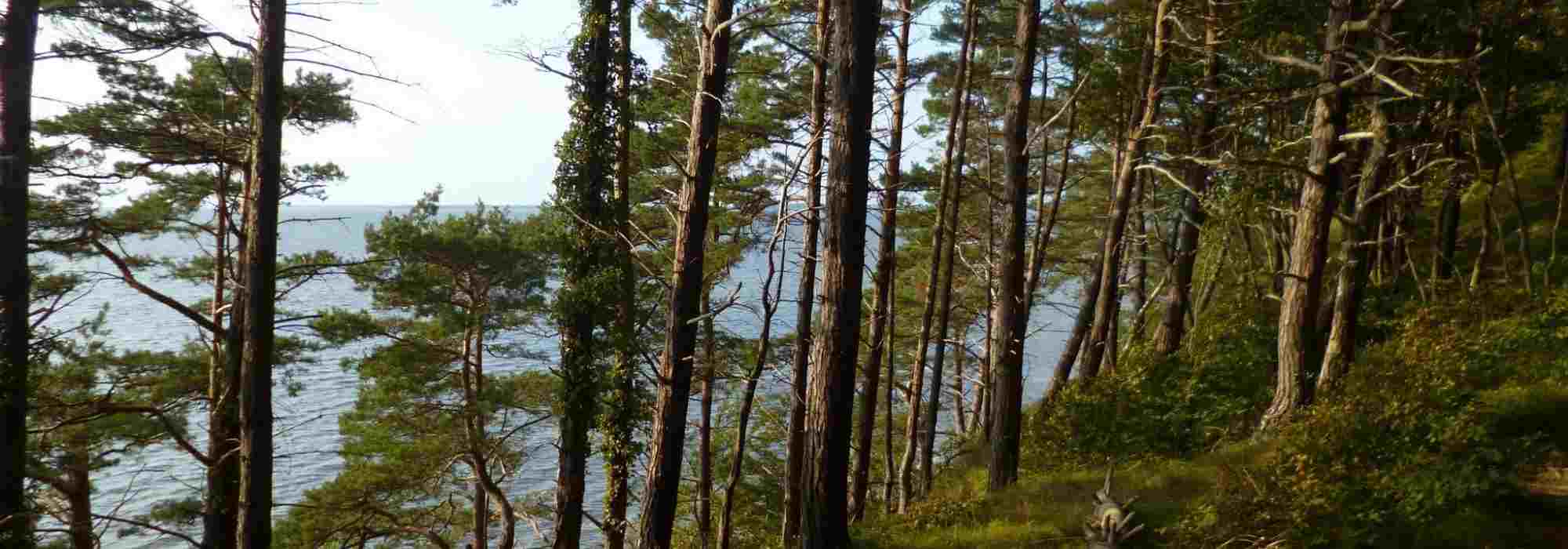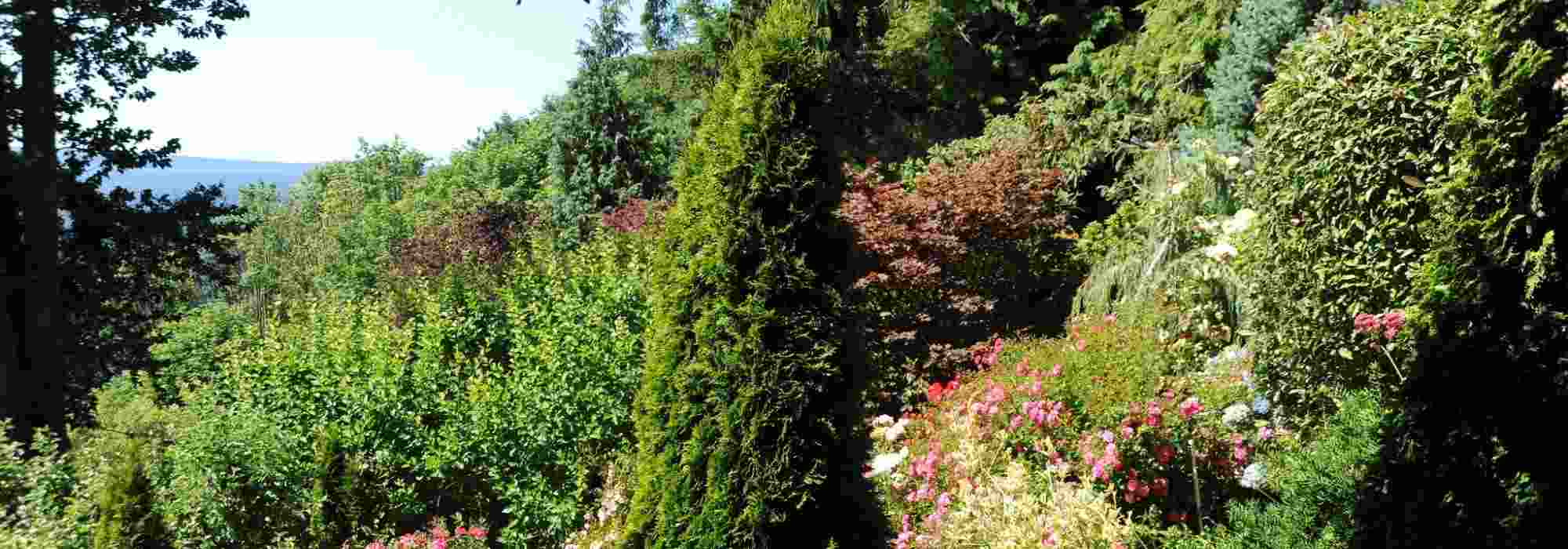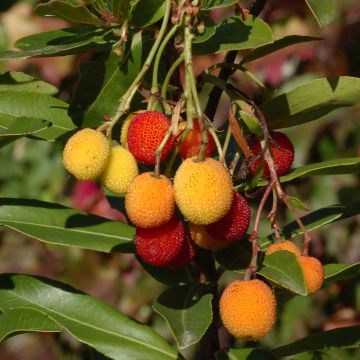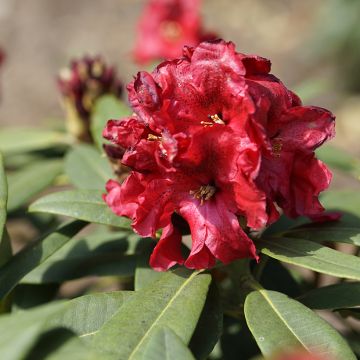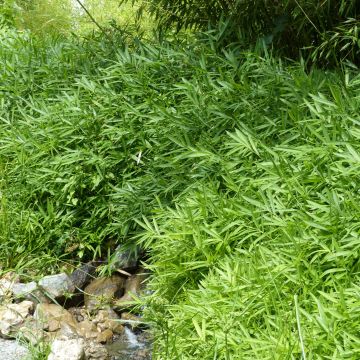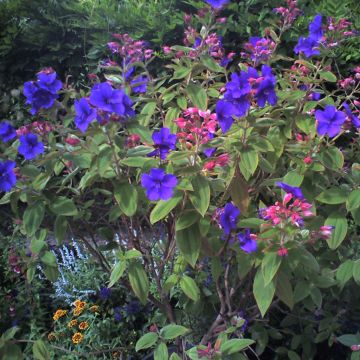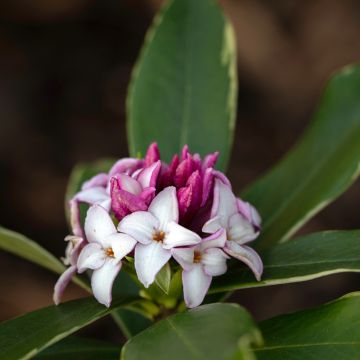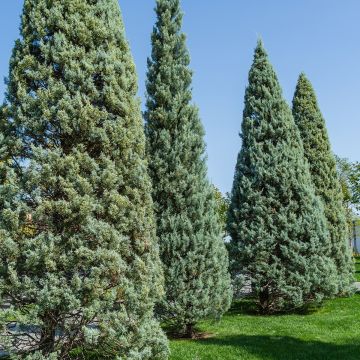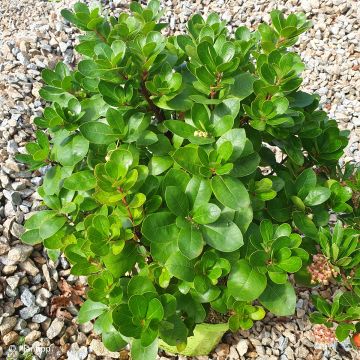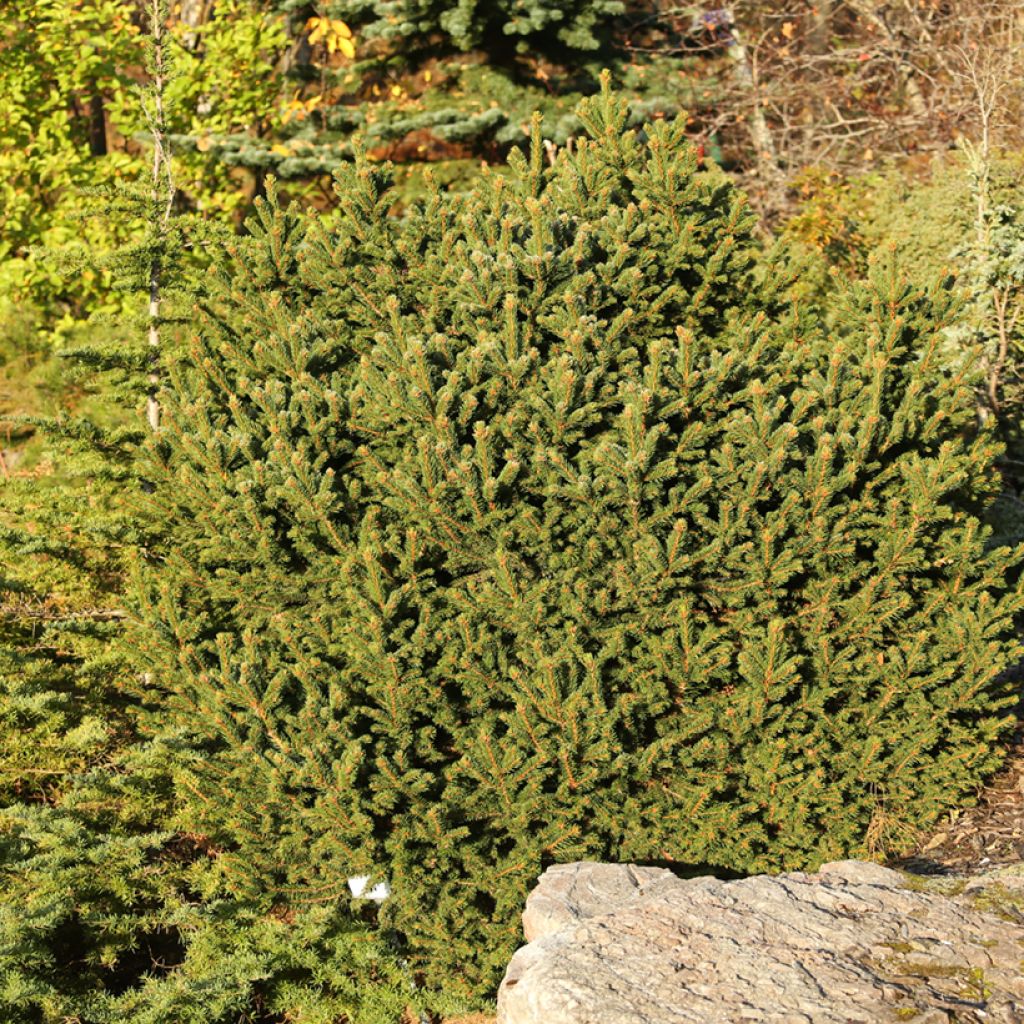

Picea abies Ohlendorffii - Norway spruce
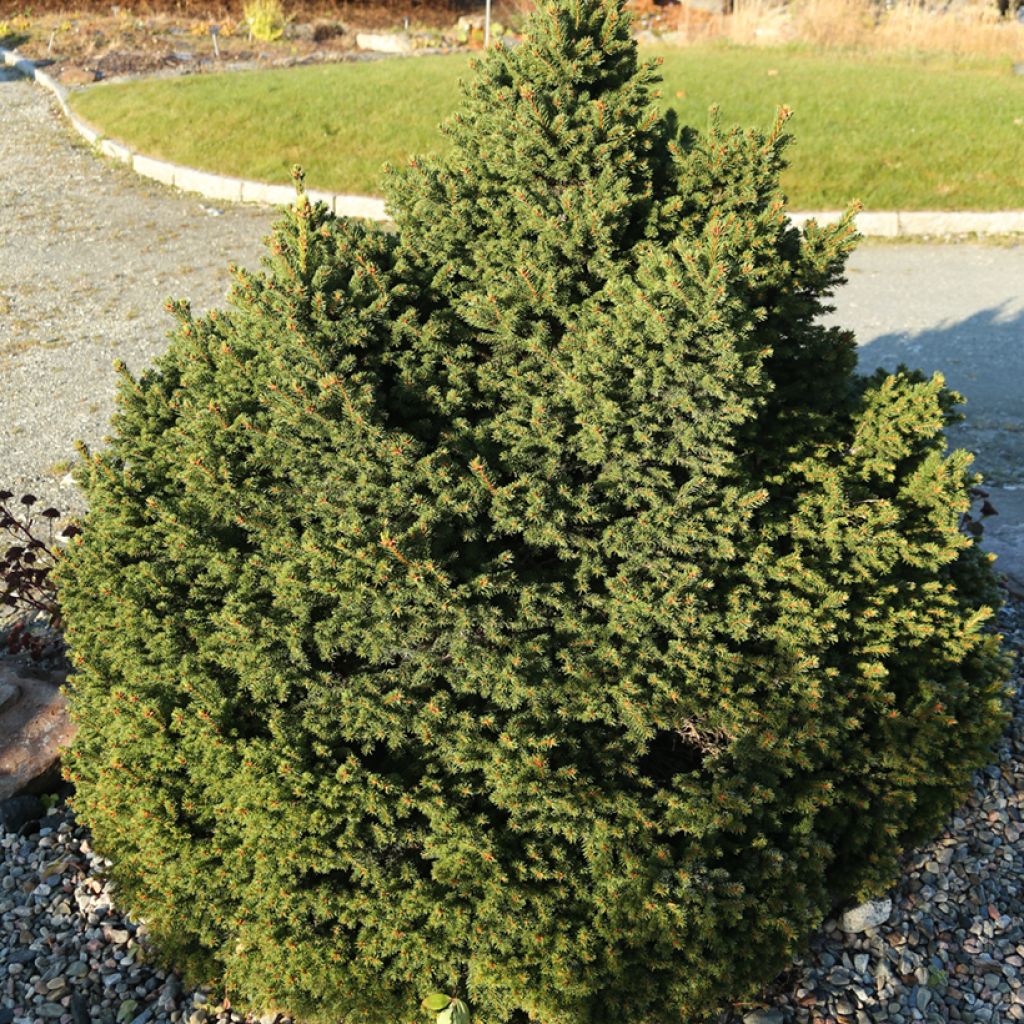

Picea abies Ohlendorffii - Norway spruce
Picea abies Ohlendorffii - Norway spruce
Picea abies Ohlendorffii
Norway Spruce, European Spruce
Special offer!
Receive a €20 voucher for any order over €90 (excluding delivery costs, credit notes, and plastic-free options)!
1- Add your favorite plants to your cart.
2- Once you have reached €90, confirm your order (you can even choose the delivery date!).
3- As soon as your order is shipped, you will receive an email containing your voucher code, valid for 3 months (90 days).
Your voucher is unique and can only be used once, for any order with a minimum value of €20, excluding delivery costs.
Can be combined with other current offers, non-divisible and non-refundable.
Why not try an alternative variety in stock?
View all →This plant carries a 24 months recovery warranty
More information
We guarantee the quality of our plants for a full growing cycle, and will replace at our expense any plant that fails to recover under normal climatic and planting conditions.
Would this plant suit my garden?
Set up your Plantfit profile →
Description
Picea abies 'Ohlendorffii' is a variety of Norway spruce with moderate growth, well-suited to small or medium-sized gardens. This conifer forms a broadly conical, dense silhouette, with irregular branches. Its dark green needle-like foliage is enlivened by light green spring shoots, brown winter buds, and reddish-purple mature cones. It is typically planted as a standalone specimen or at the centre of a large perennial bed.
Picea abies 'Ohlendorffii', or Ohlendorff's spruce, was developed from seeds collected in Nikita, Crimea, USSR. Theodor Ohlendorff propagated it in Hamburg, Germany, in the 1840s. However, it was not officially introduced into cultivation until 1904 by Spath Nursery. The wild species, Picea abies, also known as Norway spruce or red fir, is an evergreen conifer belonging to the Pinaceae family, native to northern Europe, particularly Scandinavia. In its natural habitat, it has a typically conical and pyramidal habit and can reach heights of 30 m or more in Eastern Europe. This species is traditionally used as a Christmas tree in Europe. This 'Ohlendorffii' spruce exhibits slow growth and an irregular, globose habit in its early years. Later, its growth accelerates, and the tree develops a broadly conical, very dense shape. Ultimately, this spruce reaches 6 to 8 m in height with a spread of 2.5 to 4 m. It produces spreading and slightly upright branches bearing numerous short, irregular shoots. These are densely covered with hard, very short needles, arranged in a brush-like manner. The reddish-brown winter buds are highly decorative. Its young spring shoots are a very soft, bright green, later maturing to a uniformly dark green with a glossy hue. The Norway spruce is a monoecious species, meaning male and female cones appear on different parts of the same tree after several years: the oval and orange-yellow male cones develop on one-year-old shoots, while the female cones appear at the tips of the shoots. The latter, initially upright and reddish, later turn brown and become pendulous. These scaly cones fall to the ground in winter after releasing small, brown seeds. Its bark is reddish-brown, initially covered with fine scales, becoming grey-brown with thicker, peeling scales as it ages. The root system of spruces is shallow and spreading, making them difficult to transplant when mature and particularly vulnerable to wind.
Picea abies 'Ohlendorffii', with its year-round presence, moderate growth, and ease of cultivation, fits effortlessly into many gardens. Its charming, slightly compacted Christmas tree-like appearance has a friendly appeal. It pairs well with large stones, geometric lines, and stone work. It thrives in well-drained, moist soils and is unfazed by very low temperatures. It can be planted as a standalone specimen on a lawn, but also works well alongside dwarf conifers with a creeping habit (juniper 'Blue Carpet', 'Hornibrookii'), heathers, or ground-covering perennials such as ground ivy. The striking architectural qualities of conifers make them ideal for contemporary gardens, which prioritise the aesthetics of form, silhouette, and texture over flowering. These reassuringly permanent plants provide lasting structure to beds, mark pathways, and edge terraces.
Plant habit
Flowering
Foliage
Botanical data
Picea
abies
Ohlendorffii
Pinaceae
Norway Spruce, European Spruce
Cultivar or hybrid
Other Picea
View all →Planting and care
Plant Picea abies 'Ohlendorffii' from September to November and from February to May in deep, well-drained, light, moist soil that is not too dry in summer. Sandy, loamy, or even slightly clayey and calcareous soil will suit it perfectly. Choose a sunny or partially shaded spot, sheltered from prevailing winds. Soak the root balls thoroughly before planting. Add organic matter at planting time and water generously for the first few years, as well as during prolonged dry spells. Apply a special conifer fertiliser every year in April and hoe the soil in summer. This extremely hardy conifer dislikes very clayey soils that are waterlogged in winter. It also struggles during scorching and very dry summers.
Planting period
Intended location
Care
Planting & care advice
This item has not been reviewed yet - be the first to leave a review about it.
Similar products
Haven't found what you were looking for?
Hardiness is the lowest winter temperature a plant can endure without suffering serious damage or even dying. However, hardiness is affected by location (a sheltered area, such as a patio), protection (winter cover) and soil type (hardiness is improved by well-drained soil).

Photo Sharing Terms & Conditions
In order to encourage gardeners to interact and share their experiences, Promesse de fleurs offers various media enabling content to be uploaded onto its Site - in particular via the ‘Photo sharing’ module.
The User agrees to refrain from:
- Posting any content that is illegal, prejudicial, insulting, racist, inciteful to hatred, revisionist, contrary to public decency, that infringes on privacy or on the privacy rights of third parties, in particular the publicity rights of persons and goods, intellectual property rights, or the right to privacy.
- Submitting content on behalf of a third party;
- Impersonate the identity of a third party and/or publish any personal information about a third party;
In general, the User undertakes to refrain from any unethical behaviour.
All Content (in particular text, comments, files, images, photos, videos, creative works, etc.), which may be subject to property or intellectual property rights, image or other private rights, shall remain the property of the User, subject to the limited rights granted by the terms of the licence granted by Promesse de fleurs as stated below. Users are at liberty to publish or not to publish such Content on the Site, notably via the ‘Photo Sharing’ facility, and accept that this Content shall be made public and freely accessible, notably on the Internet.
Users further acknowledge, undertake to have ,and guarantee that they hold all necessary rights and permissions to publish such material on the Site, in particular with regard to the legislation in force pertaining to any privacy, property, intellectual property, image, or contractual rights, or rights of any other nature. By publishing such Content on the Site, Users acknowledge accepting full liability as publishers of the Content within the meaning of the law, and grant Promesse de fleurs, free of charge, an inclusive, worldwide licence for the said Content for the entire duration of its publication, including all reproduction, representation, up/downloading, displaying, performing, transmission, and storage rights.
Users also grant permission for their name to be linked to the Content and accept that this link may not always be made available.
By engaging in posting material, Users consent to their Content becoming automatically accessible on the Internet, in particular on other sites and/or blogs and/or web pages of the Promesse de fleurs site, including in particular social pages and the Promesse de fleurs catalogue.
Users may secure the removal of entrusted content free of charge by issuing a simple request via our contact form.
The flowering period indicated on our website applies to countries and regions located in USDA zone 8 (France, the United Kingdom, Ireland, the Netherlands, etc.)
It will vary according to where you live:
- In zones 9 to 10 (Italy, Spain, Greece, etc.), flowering will occur about 2 to 4 weeks earlier.
- In zones 6 to 7 (Germany, Poland, Slovenia, and lower mountainous regions), flowering will be delayed by 2 to 3 weeks.
- In zone 5 (Central Europe, Scandinavia), blooming will be delayed by 3 to 5 weeks.
In temperate climates, pruning of spring-flowering shrubs (forsythia, spireas, etc.) should be done just after flowering.
Pruning of summer-flowering shrubs (Indian Lilac, Perovskia, etc.) can be done in winter or spring.
In cold regions as well as with frost-sensitive plants, avoid pruning too early when severe frosts may still occur.
The planting period indicated on our website applies to countries and regions located in USDA zone 8 (France, United Kingdom, Ireland, Netherlands).
It will vary according to where you live:
- In Mediterranean zones (Marseille, Madrid, Milan, etc.), autumn and winter are the best planting periods.
- In continental zones (Strasbourg, Munich, Vienna, etc.), delay planting by 2 to 3 weeks in spring and bring it forward by 2 to 4 weeks in autumn.
- In mountainous regions (the Alps, Pyrenees, Carpathians, etc.), it is best to plant in late spring (May-June) or late summer (August-September).
The harvesting period indicated on our website applies to countries and regions in USDA zone 8 (France, England, Ireland, the Netherlands).
In colder areas (Scandinavia, Poland, Austria...) fruit and vegetable harvests are likely to be delayed by 3-4 weeks.
In warmer areas (Italy, Spain, Greece, etc.), harvesting will probably take place earlier, depending on weather conditions.
The sowing periods indicated on our website apply to countries and regions within USDA Zone 8 (France, UK, Ireland, Netherlands).
In colder areas (Scandinavia, Poland, Austria...), delay any outdoor sowing by 3-4 weeks, or sow under glass.
In warmer climes (Italy, Spain, Greece, etc.), bring outdoor sowing forward by a few weeks.






























